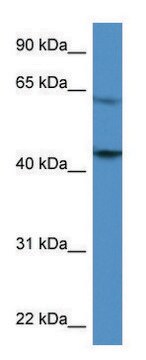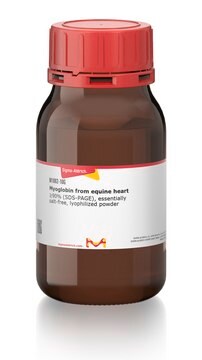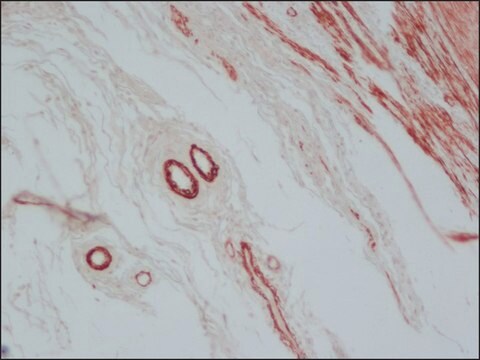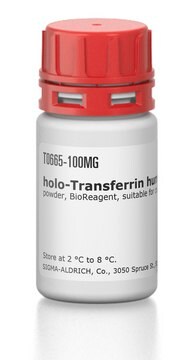SAB4500823
Anti-PAR1 (Cleaved-Ser42), N-Terminal antibody produced in rabbit
affinity isolated antibody
Synonym(s):
CXCR-7, CXCR7, G-protein coupled receptor 159, G-protein coupled receptor RDC1, chemokine orphan receptor 1
About This Item
WB
western blot: 1:500-1:1000
Recommended Products
biological source
rabbit
Quality Level
conjugate
unconjugated
antibody form
affinity isolated antibody
antibody product type
primary antibodies
clone
polyclonal
form
buffered aqueous solution
mol wt
antigen 46 kDa
species reactivity
human
concentration
~1 mg/mL
technique(s)
ELISA: 1:20000
western blot: 1:500-1:1000
NCBI accession no.
UniProt accession no.
shipped in
wet ice
storage temp.
−20°C
target post-translational modification
proteolytically cleaved (Ser42)
Gene Information
human ... F2R(2149)
General description
Protease-activated receptor-1 (PAR1), also known as coagulation factor II thrombin receptor (F2R), is encoded by the gene mapped to human chromosome 5q13.3. The encoded protein is a cell surface seven-transmembrane G protein coupled receptor.
Immunogen
Immunogen Range: 23-72
Application
Biochem/physiol Actions
Features and Benefits
Physical form
Disclaimer
Not finding the right product?
Try our Product Selector Tool.
Storage Class Code
10 - Combustible liquids
WGK
nwg
Flash Point(F)
Not applicable
Flash Point(C)
Not applicable
Choose from one of the most recent versions:
Certificates of Analysis (COA)
Don't see the Right Version?
If you require a particular version, you can look up a specific certificate by the Lot or Batch number.
Already Own This Product?
Find documentation for the products that you have recently purchased in the Document Library.
Our team of scientists has experience in all areas of research including Life Science, Material Science, Chemical Synthesis, Chromatography, Analytical and many others.
Contact Technical Service








